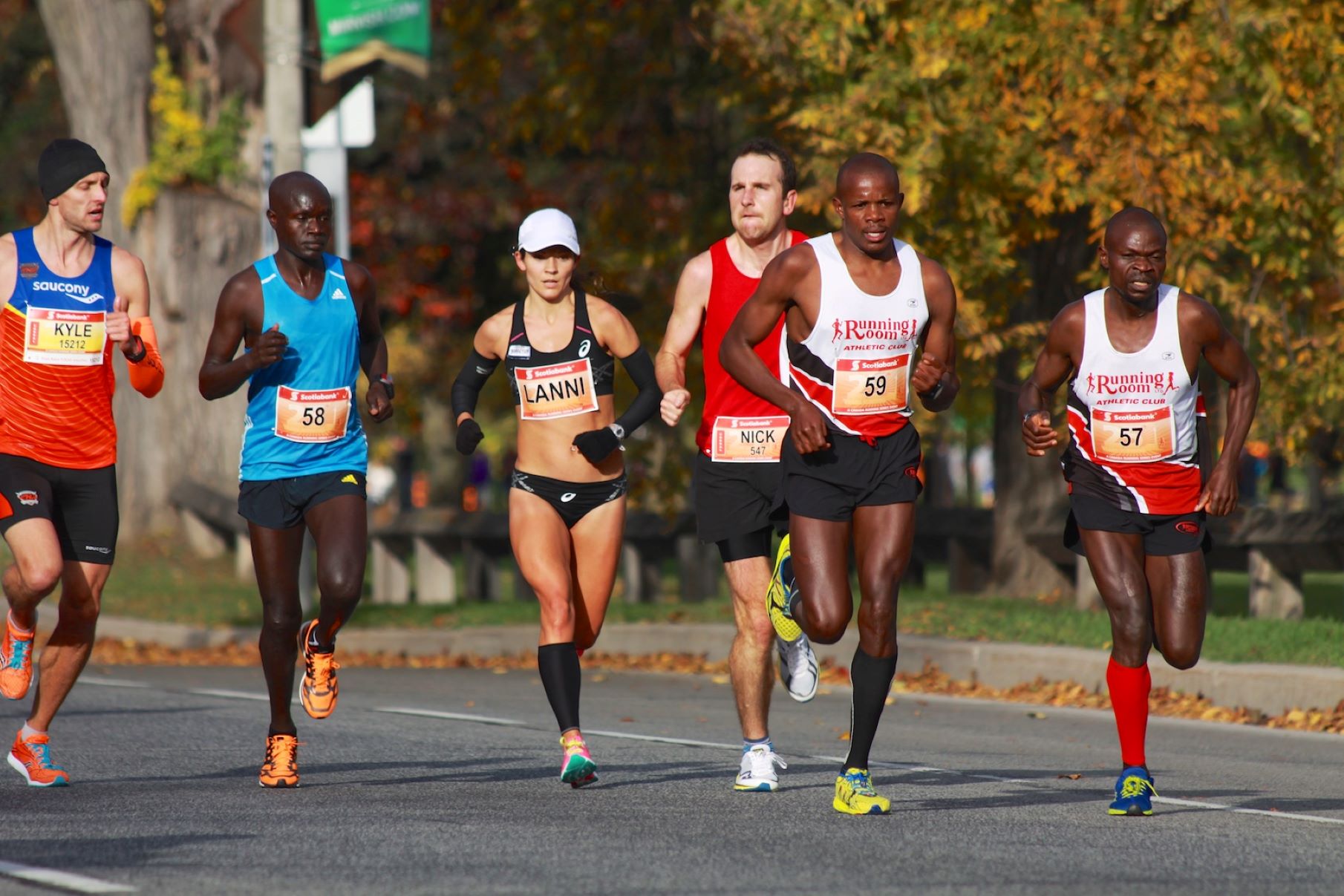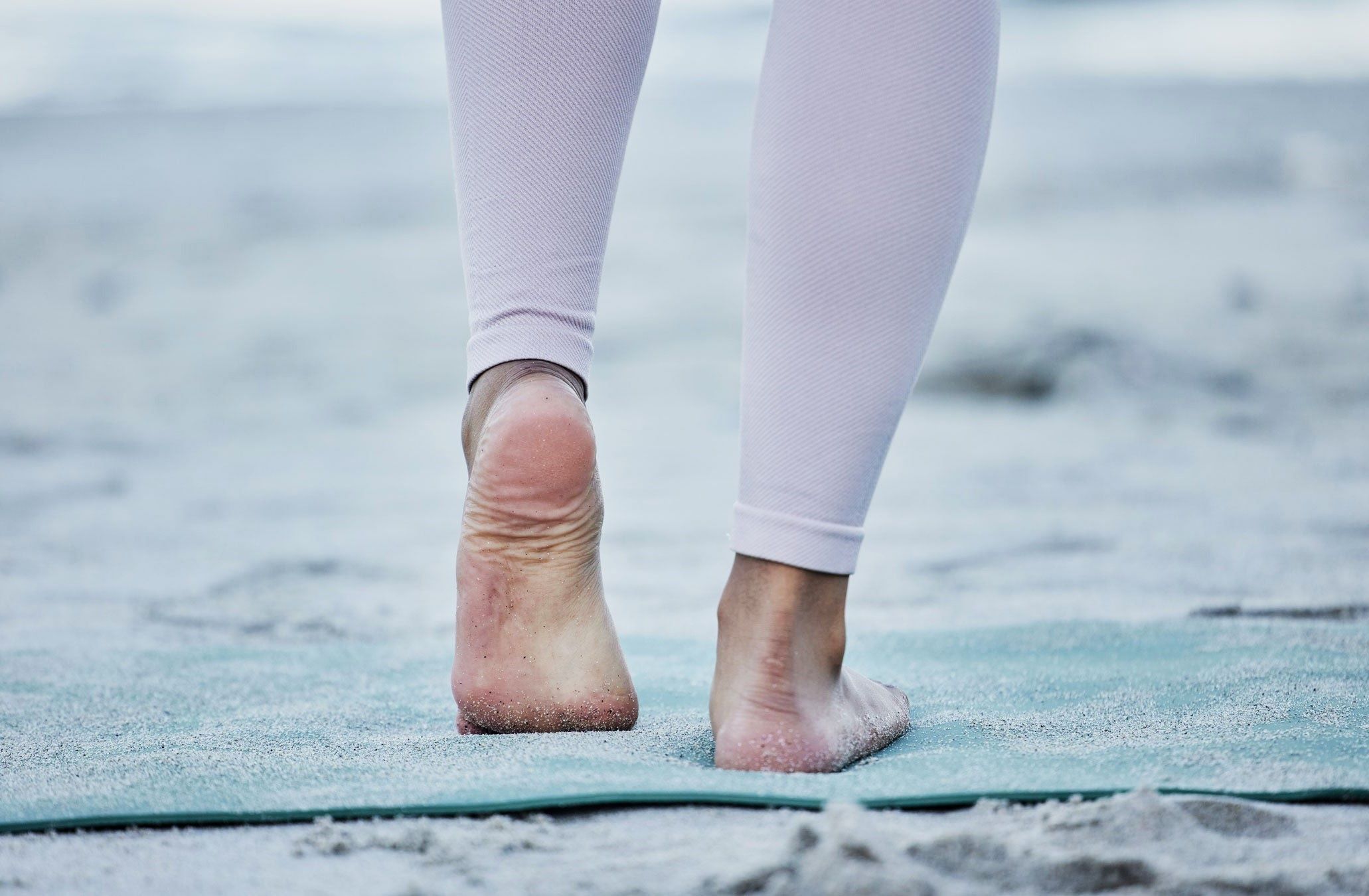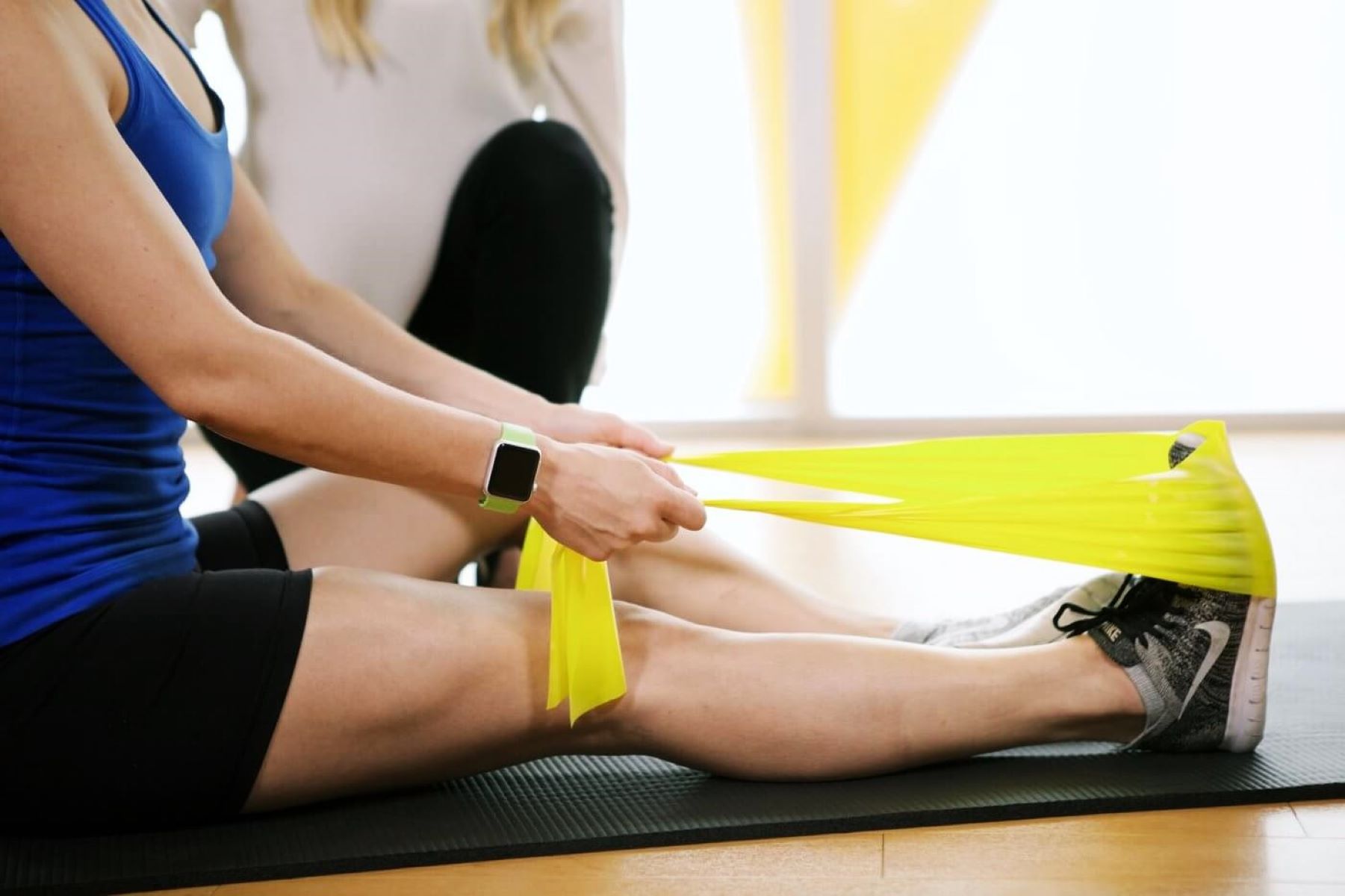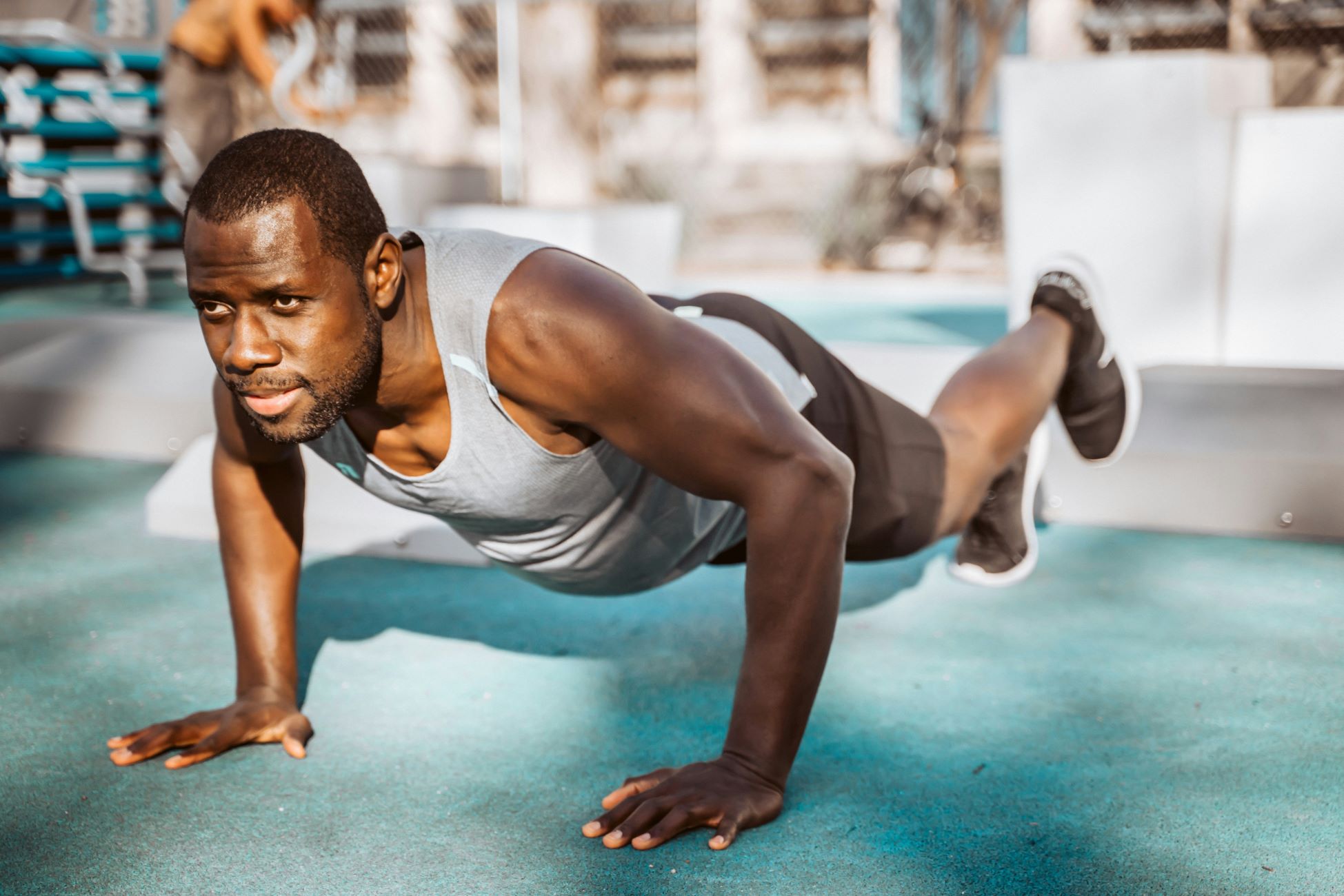Home>Health & Nutrition>Running: Strengthening The Pelvic Floor For Women


Health & Nutrition
Running: Strengthening The Pelvic Floor For Women
Published: February 20, 2024
Improve women's health and nutrition with pelvic floor strengthening exercises. Learn how running can benefit and support pelvic floor health.
(Many of the links in this article redirect to a specific reviewed product. Your purchase of these products through affiliate links helps to generate commission for Therunningadvisor.com, at no extra cost. Learn more)
Table of Contents
Introduction
Running is an invigorating and empowering form of exercise that offers a myriad of benefits for women. It not only enhances cardiovascular health and boosts mood but also strengthens muscles throughout the body. However, one area that is often overlooked when it comes to running is the pelvic floor. The pelvic floor plays a crucial role in providing support for the pelvic organs, maintaining bladder control, and contributing to sexual function. For female runners, it is essential to understand the significance of a strong and healthy pelvic floor and to incorporate targeted exercises into their training regimen to prevent potential issues.
In this article, we will delve into the importance of strengthening the pelvic floor for women who engage in running. We will explore the benefits of pelvic floor exercises, common pelvic floor issues that female runners may encounter, and effective exercises to strengthen the pelvic floor. Additionally, we will provide valuable tips on seamlessly incorporating pelvic floor strengthening into a running routine. By understanding the vital role of the pelvic floor and implementing targeted strategies, female runners can optimize their performance, prevent potential complications, and promote overall well-being.
Read more: Nutrition Guide For Women’s Running
Understanding the Pelvic Floor
The pelvic floor is a group of muscles, ligaments, and connective tissues that form a supportive hammock-like structure at the base of the pelvis. This intricate network of tissues plays a pivotal role in supporting the pelvic organs, including the bladder, uterus, and rectum. For women, the pelvic floor also supports the uterus during pregnancy and aids in the birthing process. Additionally, these muscles contribute to urinary and fecal continence, sexual function, and core stability.
The pelvic floor muscles can be divided into three layers: the superficial perineal layer, the deep urogenital diaphragm, and the pelvic diaphragm. These layers work in harmony to provide support and maintain the integrity of the pelvic organs. When these muscles are weak or dysfunctional, it can lead to a range of issues such as urinary incontinence, pelvic organ prolapse, and decreased sexual satisfaction.
In the context of running, the pelvic floor experiences increased pressure and impact during each stride. This can potentially exacerbate any existing weaknesses or imbalances in the pelvic floor muscles. Understanding the anatomy and function of the pelvic floor is crucial for female runners, as it empowers them to take proactive measures to maintain pelvic health and prevent potential complications.
Furthermore, the pelvic floor is an integral component of the body's core musculature. It works in conjunction with the deep abdominal muscles, back muscles, and diaphragm to provide stability and support for the spine and pelvis. A strong and resilient pelvic floor is essential for maintaining proper posture, stability, and overall physical performance, especially during high-impact activities like running.
In essence, the pelvic floor is a foundational element of women's health and well-being. By gaining a comprehensive understanding of its structure and function, female runners can appreciate the significance of prioritizing pelvic floor strength and actively incorporating targeted exercises into their training routine. This knowledge empowers women to take proactive steps in safeguarding their pelvic health and optimizing their running experience.
Benefits of Strengthening the Pelvic Floor for Women
Strengthening the pelvic floor offers a multitude of benefits for women, particularly those who engage in running and other high-impact activities. By prioritizing pelvic floor health and incorporating targeted exercises into their fitness routine, women can experience significant advantages that contribute to their overall well-being and athletic performance.
-
Enhanced Pelvic Health: Strengthening the pelvic floor muscles can help prevent and alleviate various pelvic floor disorders, including urinary incontinence, pelvic organ prolapse, and fecal incontinence. These conditions can significantly impact a woman's quality of life, and by fortifying the pelvic floor, women can reduce the risk of developing these issues and improve existing symptoms.
-
Improved Core Stability: The pelvic floor is an integral component of the body's core musculature. A strong and resilient pelvic floor contributes to overall core stability, which is essential for maintaining proper posture, balance, and spinal alignment during running and other physical activities. By strengthening the pelvic floor, women can enhance their overall core strength and stability, leading to improved athletic performance and reduced risk of injury.
-
Optimized Running Performance: A robust pelvic floor plays a crucial role in providing support for the pelvic organs and maintaining bladder control. For female runners, this translates to improved running efficiency and reduced discomfort during physical exertion. By strengthening the pelvic floor, women can enhance their running experience, allowing them to focus on their performance without being hindered by pelvic discomfort or concerns about bladder control.
-
Prevention of Pelvic Organ Prolapse: Pelvic organ prolapse occurs when the pelvic organs descend into the vaginal canal due to weakened pelvic floor muscles. By incorporating pelvic floor exercises into their fitness regimen, women can reduce the risk of pelvic organ prolapse and maintain the optimal positioning of the pelvic organs. This preventive approach is particularly crucial for female runners, as the repetitive impact of running can exert additional pressure on the pelvic floor.
-
Enhanced Sexual Function: Strong pelvic floor muscles are essential for sexual function and satisfaction. By strengthening these muscles, women can experience improved vaginal tone, enhanced sensation during intercourse, and better control over the pelvic floor muscles. This can contribute to greater sexual confidence and overall sexual well-being.
In essence, the benefits of strengthening the pelvic floor for women extend beyond physical health and athletic performance. By prioritizing pelvic floor strength, women can proactively safeguard their pelvic health, enhance their overall well-being, and optimize their running experience. Incorporating targeted pelvic floor exercises into a fitness routine empowers women to take control of their pelvic health and enjoy the numerous advantages that come with a strong and resilient pelvic floor.
Common Pelvic Floor Issues for Female Runners
Female runners are susceptible to a range of pelvic floor issues that can significantly impact their running experience and overall well-being. The repetitive impact and stress placed on the pelvic floor during running can exacerbate existing weaknesses or lead to the development of various pelvic floor disorders. Understanding these common issues is essential for female runners to recognize the signs, take preventive measures, and seek appropriate support when needed.
-
Urinary Incontinence: Urinary incontinence, particularly stress urinary incontinence, is a prevalent issue among female runners. This condition involves the unintentional leakage of urine during physical activities such as running, jumping, or sneezing. The impact of each stride during running can place pressure on the bladder, leading to urinary leakage in individuals with weakened pelvic floor muscles.
-
Pelvic Organ Prolapse: The repetitive pounding of running can contribute to pelvic organ prolapse in female runners. This condition occurs when the pelvic organs, including the bladder, uterus, or rectum, descend into the vaginal canal due to weakened pelvic floor support. Female runners may experience sensations of pelvic pressure, discomfort, or a bulging sensation, indicating potential pelvic organ prolapse.
-
Pelvic Pain and Discomfort: Running can exacerbate pelvic pain and discomfort in women with pelvic floor dysfunction. This may manifest as a persistent, dull ache in the pelvic region, discomfort during or after running, or generalized pelvic discomfort that affects daily activities. Pelvic floor issues such as hypertonicity or weakness can contribute to these symptoms.
-
Decreased Sexual Satisfaction: Weak pelvic floor muscles can impact sexual function and satisfaction for female runners. This may manifest as decreased vaginal tone, reduced sensation during intercourse, or challenges in achieving orgasm. These issues can significantly impact a woman's sexual confidence and overall well-being.
-
Core Instability and Lower Back Pain: Weakness or dysfunction in the pelvic floor can contribute to core instability and lower back pain in female runners. The pelvic floor is an integral component of the core musculature, and its dysfunction can lead to imbalances that affect overall stability and spinal alignment during running.
Recognizing these common pelvic floor issues is the first step toward addressing and preventing potential complications. By incorporating targeted pelvic floor exercises, seeking guidance from healthcare professionals specializing in pelvic health, and adopting strategies to support pelvic floor function, female runners can mitigate the risk of these issues and optimize their running experience.
In essence, raising awareness about common pelvic floor issues empowers female runners to prioritize pelvic health, seek appropriate support, and take proactive measures to prevent and address potential pelvic floor challenges. By understanding these issues, female runners can cultivate a holistic approach to their well-being and running performance, ensuring that their pelvic floor remains strong, resilient, and supportive throughout their running journey.
Exercises to Strengthen the Pelvic Floor
When it comes to strengthening the pelvic floor, targeted exercises play a pivotal role in promoting muscle resilience and overall pelvic health for female runners. Incorporating specific pelvic floor exercises into a regular fitness routine can help women proactively address potential issues and optimize their running experience. Here are several effective exercises designed to strengthen the pelvic floor:
-
Kegel Exercises: Kegels are perhaps the most well-known pelvic floor exercises and are highly effective in targeting the pelvic floor muscles. To perform Kegel exercises, simply contract the muscles used to stop the flow of urine, hold for a few seconds, and then release. Aim to complete multiple sets of Kegels throughout the day, gradually increasing the duration of each contraction as the muscles strengthen.
-
Bridge Pose: This yoga-inspired exercise not only engages the glutes and core but also activates the pelvic floor muscles. Lie on your back with knees bent and feet flat on the floor. Lift your hips off the ground, creating a straight line from shoulders to knees. Engage the pelvic floor muscles while holding the bridge position for several breaths before lowering back down.
-
Squats: Incorporating squats into a workout routine can effectively engage the pelvic floor muscles. Stand with feet shoulder-width apart, lower into a squat position, and then return to a standing position. Focus on engaging the pelvic floor muscles throughout the movement to enhance their strength and endurance.
-
Pelvic Floor Ball Squeezes: Using an exercise or Pilates ball, sit comfortably and place the ball between the knees. Squeeze the ball using the inner thigh muscles while simultaneously engaging the pelvic floor muscles. Hold the squeeze for a few seconds before releasing and repeating the exercise.
-
Deep Breathing with Pelvic Floor Engagement: Practicing deep diaphragmatic breathing while consciously engaging the pelvic floor muscles can enhance their coordination and strength. Inhale deeply, allowing the belly to rise, while simultaneously engaging the pelvic floor muscles. Exhale fully, releasing the pelvic floor muscles before repeating the cycle.
-
Plank with Pelvic Tilt: The plank exercise is renowned for its core-strengthening benefits. To incorporate pelvic floor engagement, begin in a plank position and gently tilt the pelvis upward while maintaining a strong core and engaged pelvic floor. Hold the position for a few breaths before releasing.
By integrating these exercises into a regular workout routine, female runners can effectively target and strengthen the pelvic floor muscles, promoting resilience, stability, and overall pelvic health. It is important to perform these exercises with proper form and technique, gradually increasing intensity and duration as the muscles adapt and strengthen. Additionally, seeking guidance from a qualified fitness or pelvic health professional can provide valuable insights and personalized recommendations for pelvic floor strengthening exercises tailored to individual needs and goals.
In summary, incorporating targeted exercises to strengthen the pelvic floor empowers female runners to take proactive steps in maintaining pelvic health, optimizing athletic performance, and preventing potential pelvic floor issues. By prioritizing pelvic floor strength through targeted exercises, women can cultivate a strong and resilient foundation, ensuring that their running journey is supported by a healthy and functional pelvic floor.
Tips for Incorporating Pelvic Floor Strengthening into Running Routine
Incorporating pelvic floor strengthening exercises into a running routine is essential for female runners to optimize their pelvic health and overall athletic performance. By seamlessly integrating targeted pelvic floor exercises with running activities, women can proactively address potential pelvic floor issues and promote resilience and stability in this crucial muscle group. Here are valuable tips for seamlessly incorporating pelvic floor strengthening into a running routine:
-
Prioritize Consistency: Consistency is key when it comes to pelvic floor strengthening. Incorporate pelvic floor exercises into a regular training schedule, ensuring that they become an integral part of the overall fitness routine. By consistently engaging in pelvic floor exercises, women can gradually enhance muscle strength and endurance, leading to long-term benefits for pelvic health.
-
Integrate During Warm-Up and Cool-Down: Utilize the warm-up and cool-down periods of a running session to incorporate pelvic floor exercises. Before starting a run, perform a series of pelvic floor contractions and releases to activate these muscles. Similarly, during the cool-down phase, engage in targeted pelvic floor exercises to promote relaxation and recovery.
-
Mindful Running Technique: Pay attention to running technique and posture to support the pelvic floor. Maintaining proper alignment, engaging the core muscles, and minimizing excessive impact can reduce the strain on the pelvic floor during running. By running mindfully, women can mitigate potential stress on the pelvic floor while optimizing running efficiency.
-
Cross-Train with Pelvic Floor-Friendly Activities: Incorporate cross-training activities that complement pelvic floor strengthening. Low-impact exercises such as swimming, cycling, and Pilates can provide valuable opportunities to engage the pelvic floor muscles while offering variety to the overall training regimen.
-
Seek Professional Guidance: Consult with a fitness or pelvic health professional to receive personalized guidance on pelvic floor strengthening exercises. A qualified professional can assess individual needs, provide tailored exercise recommendations, and offer valuable insights on integrating pelvic floor exercises into a running routine effectively.
-
Listen to Your Body: Pay attention to the body's signals and adjust the intensity of pelvic floor exercises based on individual comfort and capability. It is important to gradually progress in intensity and duration while respecting the body's feedback to prevent overexertion and promote sustainable pelvic floor strengthening.
-
Embrace Holistic Wellness: Emphasize holistic wellness practices that support pelvic health alongside running. This includes staying adequately hydrated, maintaining a balanced diet, and prioritizing rest and recovery, all of which contribute to overall pelvic health and well-being.
By implementing these tips, female runners can seamlessly integrate pelvic floor strengthening into their running routine, fostering a holistic approach to pelvic health and athletic performance. Prioritizing pelvic floor strength not only enhances running experience but also empowers women to proactively safeguard their pelvic health, ensuring a strong and resilient foundation for their running journey.
Conclusion
In conclusion, the pelvic floor plays a pivotal role in the overall well-being and athletic performance of female runners. By understanding the significance of a strong and resilient pelvic floor, women can proactively address potential issues, optimize their running experience, and prioritize their pelvic health. The benefits of strengthening the pelvic floor extend beyond physical health, encompassing enhanced core stability, improved running performance, and preventive measures against common pelvic floor issues.
Through targeted exercises such as Kegels, bridge poses, squats, and deep breathing with pelvic floor engagement, female runners can effectively strengthen the pelvic floor, promoting resilience, stability, and overall pelvic health. By integrating these exercises into a regular fitness routine and seeking professional guidance when needed, women can cultivate a strong and resilient foundation, ensuring that their running journey is supported by a healthy and functional pelvic floor.
Seamlessly incorporating pelvic floor strengthening into a running routine involves prioritizing consistency, integrating exercises during warm-up and cool-down, practicing mindful running techniques, and embracing holistic wellness practices. By following these valuable tips, female runners can foster a holistic approach to pelvic health and athletic performance, empowering them to proactively safeguard their well-being and optimize their running experience.
Ultimately, the knowledge and proactive measures taken to strengthen the pelvic floor empower female runners to navigate their running journey with confidence, resilience, and a deep understanding of their pelvic health. By prioritizing pelvic floor strength, women can embrace the countless benefits that come with a strong and resilient pelvic floor, ensuring that they can fully enjoy the physical, mental, and emotional rewards of running while maintaining optimal pelvic health.















